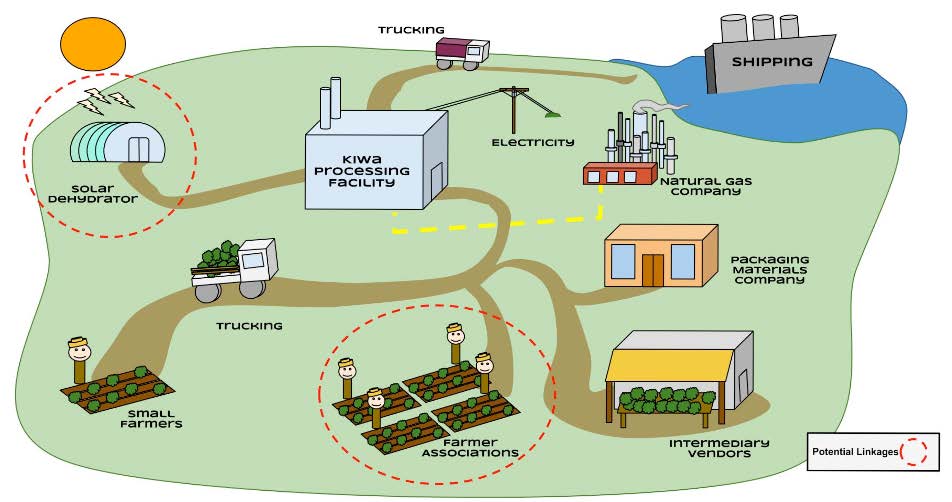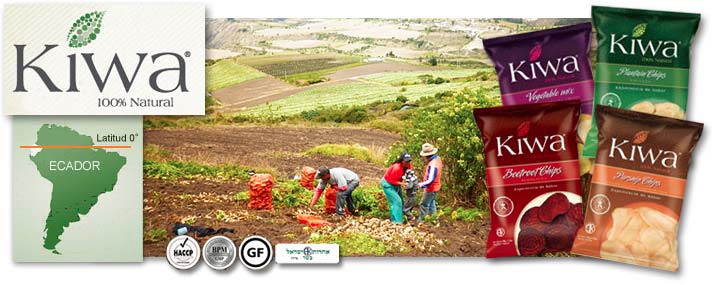About - Solar Drying (Ecuador)

Winter 2013
The goal of this project is to find a viable solar drying system to produce dehydrated fruit (mango, banana, naranjilla and tomate de arbol) in the subtropical climate of Ecuador. We seek to expand production capacity at KIWA, lower energy input costs, and increase product life and quality. The establishment of improved technologies will be leveraged by simultaneously advancing relationships with small‐scale producers to create a more secure, sustainable future for the company and growers.
Due to the need of a large‐scale system and the amount of power required to produce air speeds through a large space, electricity will need to be incorporated into dehydrator designs. D‐Lab and KIWA will analyze the Ecuadorian energy sector in more detail to determine if electricity costs are anticipated to trend significantly in any direction. Because on‐grid electricity is such a significant portion of variable energy costs in the prototypical hybrid system above and because of prior inconsistencies in pricing from the national supplier, we believe this area merits further attention and diligence. Prototyping in D‐Lab II will further address needs of the technology regarding air flow.
To improve farmer relations and secure raw material supplies, the D‐Lab team recommends Kiwa initiate the establishment of a contracted farmers’ association/cooperative for the reasons listed in the Objective 2, Solution 2 section. Member farmers will be contracted to produce crops as specified by Kiwa, giving Kiwa increased stability and control over their supply chain and farmers increased stability and control over their revenue generation.
Read the Winter final report
About - Ecuador Kiwa Fruit Dryer

The following report documents the background, design, development, and testing of a solar heating project undertaken by our D-lab team in partnership with the Ecuadorian company, Inaproces. Our report highlights key factors that contributed to our design process including client needs, prior art, and achievability within the project’s 10-week timeline.
Currently, Kiwa’s chip production involves an energy-intensive frying process. Chips a friend in vats of oil that are heated with natural gas. The company then drains, sorts, and packages the chips on site. The costs to heat the oil are high (The company spends about $ 4,000 in propane gas consumption each month), and for this reason Kiwa is interested in exploring solar dehydration to cut costs.
As our D-lab team explored new avenues for production for Kiwa, we took the company’s needs and interests into account. The company is interested in utilizing solar energy as a means of reducing costs, producing a quality product, diversifying the brand, and promoting the company’s environmentally–friendly image. Kiwa expressed its openness to investigating a variety of approaches to achieving these goals.
Our results clearly showed that the “solar tube” design outperformed the rest of the pre-prototypes, with the fastest gain in temperature as well as maintaining the highest temperature overall. Additionally, we also collected some surprising data. For instance, we learned that painting the boxes black on the outside verses just black on the inside had no real temperature affect. So when constructing our final prototype we decided to paint both the inside and the outside for more esthetic purposes knowing it wouldn’t lower the temperature significantly. Finally, in viewing our collected data for, we decided to go with the two most promising designs (the “solar tube” and the “solar wall”) because these were the most interesting designs with the most potential, as well as the ability to compare both side by side to see how our design (the “solar tube”) faired with a conventional design already on the market (the “solar wall”). This comparison was sure to give us more data on the performance ability of either design.
